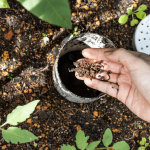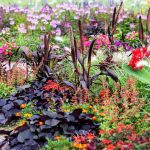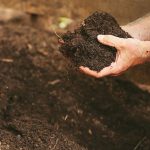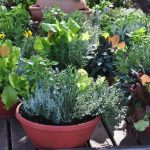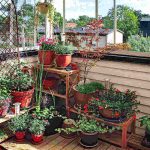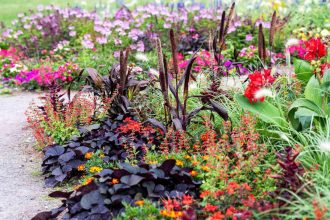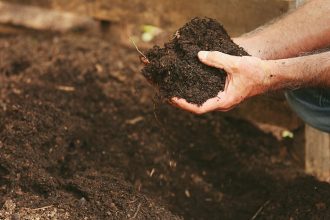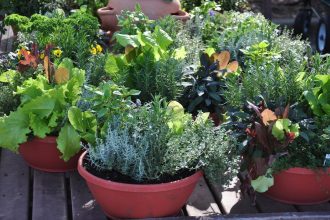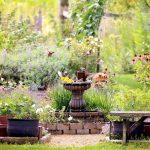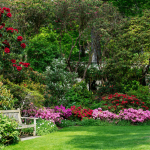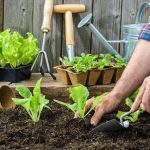In the intricate dance of nature, soil and sunlight are the two unsung heroes that fuel the vibrant explosion of color and life found in flowering plants. Understanding the delicate balance between these two essential elements is key to nurturing a flourishing garden or indoor oasis. Join us on a journey through the wondrous world of soil and light, as we uncover the secrets to unlocking the full potential of your beloved blooms.

– Importance of Soil Composition for Flowering Plants
When it comes to the successful growth and blooming of flowering plants, understanding the importance of soil composition is crucial. The type of soil that a plant is grown in directly impacts its ability to thrive and produce beautiful blooms. Here’s why soil composition is essential for flowering plants:
- Nutrient Absorption: Soil provides essential nutrients like nitrogen, phosphorus, and potassium that flowering plants need to grow and bloom. The composition of the soil determines the availability of these nutrients for the plant’s roots to absorb.
- Water Retention: Different types of soil have varying levels of water retention capacity. Soil that retains too much water can lead to root rot, while soil that drains too quickly can leave the plant dehydrated. Finding the right balance is key for healthy blooming.
- pH Balance: The pH level of the soil affects the plant’s ability to take up nutrients. Most flowering plants prefer slightly acidic soil, so it’s essential to monitor and adjust the pH level of the soil accordingly.
Understanding the soil composition is just one piece of the puzzle when it comes to nurturing flowering plants. Equally important is providing the right amount of light for optimal growth and blooming. Flowers rely on light to photosynthesize and produce energy, so placing them in the right location is essential. By striking a balance between soil composition and light exposure, you can ensure that your flowering plants thrive and bloom beautifully.
– Finding the Right Balance of Light for Healthy Bloom
When it comes to helping your flowering plants thrive, understanding the right balance of light and soil is essential. Light plays a crucial role in the blooming process, as it provides the energy necessary for plants to produce flowers. However, too much or too little light can have negative effects on the health of your plants. Finding the optimal balance is key to ensuring healthy blooms.
Here are some tips to help you find the right balance of light for your flowering plants:
- Know Your Plant: Different plants require different levels of light to thrive. Some plants prefer direct sunlight, while others thrive in indirect light. Research the specific light requirements of your flowering plants to ensure they are getting the right amount of light.
- Monitor Light Levels: Keep an eye on the amount of light your plants are receiving throughout the day. Use a light meter to measure the intensity of light in different areas of your garden to determine the best placement for your flowering plants.
- Provide Shade: If plants are getting too much direct sunlight, consider providing shade during the hottest parts of the day. This can help prevent your plants from getting sunburned and wilting.
– Practical Tips for Maximizing Growth with Proper Soil and Light Conditions
When it comes to helping your flowering plants reach their full potential, understanding the importance of proper soil and light conditions is essential. By providing the right environment for your plants, you can maximize growth and ensure a beautiful display of vibrant blooms.
Soil: Choosing the right soil for your flowering plants is crucial for their overall health and growth. Here are some practical tips to maximize growth with proper soil conditions:
- Use a well-draining soil mix to prevent waterlogged roots and promote healthy growth.
- Amend the soil with organic matter, such as compost or manure, to provide essential nutrients for your plants.
- Monitor the pH levels of the soil to ensure it is within the optimal range for your specific plant species.
Light: Light is another key factor in the growth and development of flowering plants. Here are some tips to maximize growth with proper light conditions:
- Place your plants in a location where they can receive adequate sunlight, typically 6-8 hours per day for most flowering plants.
- Monitor the intensity of sunlight your plants are receiving, as some plants may require filtered light to prevent scorching.
- Consider using grow lights or supplemental lighting to ensure your plants are getting the right amount of light, especially during the winter months.
In conclusion, understanding the relationship between soil and light is essential for the growth and blooming of flowering plants. By providing the right balance of nutrients in the soil and ensuring adequate light exposure, you can help your plants thrive and produce beautiful blooms. Remember to regularly assess and adjust these factors to create an optimal environment for your floral friends to flourish. So go ahead, dig in the dirt, soak up the sun, and watch your garden blossom into a vibrant display of color and life. Happy gardening!


